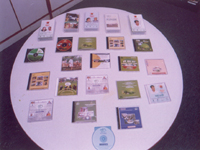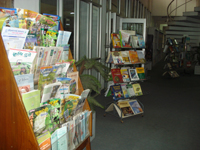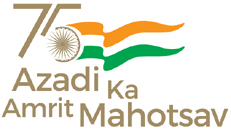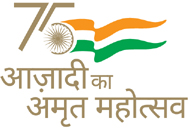



Journal of Agricultural Extension Management
Vol XVII January - June, 2016 No.1
1. Urban Agriculture: Experiences of Practitioners of Rooftop Gardening /K. Uma Rani, T. N. Reddy and S. Shah
Abstract
A study on urban agriculture was conducted in selected urban areas of Hyderabad City. Fifty respondents who were practicing rooftop gardening were selected for the study. Vegetables, fruits and flowers were the commonly grown plants found in these rooftop gardens. It was found that majority of the practitioners were growing these plants organically and they were able to meet their household requirements except during the summer season. However, poor access to technical advice, non availability of services and quality inputs at reasonable price, potential leakages, lack of training and follow-up etc. were the major hindrances found in sustaining the practice
2. Performance of RaithaSamparkaKendras in Davangere District of Karnataka/Ramappa Patil, D. Nanjappa, Raghuraja J and Basavaraj Beerannavar
Abstract
The study was conducted to assess the performance of Raitha Samparka Kendras (RSKs) of Davanagere District of Karnataka. Extension personnel and farmers constitute the sample for the study. The results regarding overall performance of RSKs reveal that 37.78 per cent of extension personnel indicated that RSKs had medium level of performance followed by equal (31.11%) percentage of extension personnel who indicated that RSKs had high and low level of performance. Less than half (40.00%) of the extension personnel indicated that there was a medium level of performance of RSKs with respect to infrastructure and other physical facilities, whereas 31.12 per cent and 28.88 per cent of extension personnel indicated low and high level of performance of RSKs. About 44.45 per cent of extension personnel indicated that RSKs had medium level of performance with regard to supply of critical inputs and customized services to farmers. A majority (86.66%) of extension personnel indicated that RSKs had medium level of performance on the planning for agricultural extension activities. With regards to formation of farmers groups 46.67 per cent of RSKs had medium level of performance. About 60.00 per cent of extension personnel indicated that RSKs had high level of performance with respect to follow up of extension activities. Less than half (42.22%) of farmers indicated that RSKs of Davangere district had medium level of performance on overall performance on different dimensions viz., dissemination of agricultural information, planning of extension activities, input supply and custom hiring services and follow up of extension activities.
3. Red LED Lighting in Poultry Facilities improves Egg Production - a field study /I. J. Reddy, Ashish Mishra, S. Mondal, P. Arul Suresh, C.G. David, R.K. Gorti and Vaibhav B. Awachat
Abstract
The objective of this study was to design a novel LED bulb and to establish the effects of different wavelengths of light on egg production in White Leghorn hens. From 28 to 72 weeks of age (woa), 20000 White Leghorn birds were divided into two groups consisting of 10,000 birds in each group (control=10000 and treated n=10000). The birds were housed in cages under a three-tier battery system with free access to ad libitum water. All White Leghorn birds were fed on the same layer ration as per the standard recommendations and were provided 16 h light and 8 h darkness. In the treated group the White Leghorn layers were exposed to red LED light (650nm) whereas in the control group, the birds were exposed to white incandescent light (450nm of wavelength). Daily egg production was recorded for both the groups at the same time for a period of 45 weeks. Feed intake in the treated group was low, but not significantly (P<0.05) affected by the treatment. The mean percentage of egg production was 88.20 in the treated group as against 85.82 in the control group. Egg production increased significantly increased significantly (P<0.05)in White Leghorn hens exposed to red LED lights relative to the birds exposed to incandescent light. The red LED is highly cost effective. The cost economics were calculated based on an anticipated gain in egg production by 0.5% at 85% egg production over 10000 White Leghorn birds from 28 woa to 72woa. By utilizing red LED light and taking advantage of the unique spectral requirements of poultry, farmers can reduce stress and mortality, regulate circadian rhythm, and substantially increase the production of eggs with increased revenue while reducing energy use and other input costs.
4. Impact of Training Programs among Sericulturists of Andhra Pradesh through Technology Demonstration and Validation /S.V. Seshagiri and P.J. Raju
Abstract
India, the largest consumer of raw silk in the world, has been mainly concentrating on production of large quantity of quality raw silk to avoid import of silk from China. Sericulture in Andhra Pradesh is a sustainable farm based economic enterprise positively favouring the rural poor in the unorganized sector because of its relatively low requirement of fixed capital and higher returns. The changes in employment and income opportunities in rural areas may be brought about by selecting a highly labour intensive and high income yielding cropping pattern and sericulture has been identified as one such sector which plays a vital role in generating gainful employment opportunities. The less skillful labour intensive activities in both cocoon production and reeling activities of sericulture compel sericulturists to hold subordinate status and hence are kept out of the interventions made for augmenting knowledge and skills and limited to lowly paid traditional activities. This scenario warrants the up-gradation of skills and knowledge of sericulturists through training on varying activities so as to enable them to harvest sustainable cocoon crop with higher income. Feedback / impact analysis carried out after the training, indicates that the training programs were quite useful and as such are to be frequently arranged for updating their knowledge and to help them gain confidence in sericulture.
5. Farming Performance of Farm Women in Rice Based Farming Systems of Andhra Pradesh/ K. Vijaya Lakshmi and K.S. Purnima
Abstract
The study was conducted in three districts, one from each region of undivided Andhra Pradesh. Three mandals from each selected district and two villages from each selected mandal were chosen. Ten farm women were chosen randomly from each village thus making a total sample of 180 farm women equally selected from three categories i.e., Large, Medium and Small based on their farm size, based on stratified random sampling. The farming performance of farm women in rice based farming systems of the three regions was analysed using six selected indicators, viz., cropping intensity, crop yield index, milk yield index, level of adoption, commercialization, expansion / diversification. The findings revealed that there was significant difference in the mean scores among the three categories of farm women in respect of overall performance. In other words, the large category farm women had the highest mean score of 395.0 followed by medium farm women (378.86). The small farm women had the least mean score of 373.62 in respect of overall farming performance.
6. Awareness of Paddy Growers regarding Neem Coated Urea in Davangere District/ J. Raghu Raja and M. Madhumathi
Abstract
The study was conducted in Davangere district of Karnataka state using Expost-facto research design. One hundred paddy growers from 10 villages representing two taluks of the district constituted the sample for the study. The data were collected through personal interview method using structured interview schedule. The findings reveal that 57.00 per cent of paddy growers had heard about Neem Coated Urea (NCU), while 72.00 per cent of them were not aware of its benefits. Majority (69.00%) of the paddy growers did not use NCU in crop production and 88.00 per cent were not aware that less quantity of NCU is required for better crop production than usage of plain urea. Only 19.00 per cent of the growers felt that plain urea should be completely replaced by NCU. The results imply that extension personnel should play a larger role in creating awareness about NCU among the farming community. Higher the usage of NCU by the farmers, greater will be the savings for the national exchequer ensuring a win-win situation for both farmers and Government.
7. Sociological Problems faced by Farmers due to Dyeing Industrial Effluents in the Noyyal River basin of Tamil Nadu/ A. Anitha Pauline and C. Karthikeyan
Abstract
The study mainly focuses on sociological problems faced by farmers due to dyeing industrial pollution. The study was conducted in Tiruppur and Erode districts of Tamil Nadu during the year 2015. A sample size of 90 farmers from each category viz., affected and unaffected areas were considered for the study. Totally 180 farmers were selected as respondents for the study. The selection of affected and unaffected areas was based on their distance from industrial zones and their well water quality standards. In the affected area, all the respondents had experienced major problems such as ‘hike in wages of agricultural labour’ (100%), ‘fear of pollution problems influenced the division of family land and its disposal for other purposes’ (100%),‘contamination of drinking water source by industrial effluents’ (100%),‘deterioration in quality of drinking water in its taste’ (100%), reduced availability of labour for agricultural purpose’ (95.55%), ‘more prevalence of eye, nose and throat irritations, head ache and viral fever’ (100%) and ‘increased health care expenditure’ (91.11%) were reported by farmers in the Noyyal river basin
8. A Study of Health Problems and Nutritional Status of Tea Garden Workers of Assam / S.B. Saikia, H.K. Bhattacharyya, A. Barooah and B. Sharma
Abstract
A study was conducted to ascertain the socioeconomic profile of tea garden workers of Assam, India. For the purpose, 299 families from three different villages were selected randomly and the socioeconomic profile was collected through a pre-scheduled structured questionnaire. The study revealed that children between 3-6 years of age and also the mothers suffered from stunted body growth. High rates of illiteracy were found in the study area and this led to marriage of the girls at a very young age. Average income of the families was very less with most of the people living in katcha house only. The study concludes that the socioeconomic condition of this section of the people of Assam may be upgraded through mass awareness programmes and emphasis on nutrition and health care.
9. Attitude of Respondents towards On-campus and Off-campus Training Programmes conducted by KVK Amritsar/Parvinder Singh, Jagmohan Singh and Sukhjinderjit Singh
Abstract
This study was undertaken with a view to ascertain the attitude of the trainees towards training programmes conducted by Krishi Vigynan Kendra, Amritsar. The study was conducted on 300 respondents, selected by random sampling technique, from 10 villages covering 5 blocks of the district. The findings infer that the on-campus trainees have more favorable attitude than off-campus trainees. The data indicates that the exposure to KVK training programmes significantly changed the attitude of farmers in the desired direction. It is stated that policies and plans to improve the adoption of agricultural technologies in India should not overlook the importance of the need to change the incompatible outlook and views held by those farmers who are considered as traditional and conservative.






